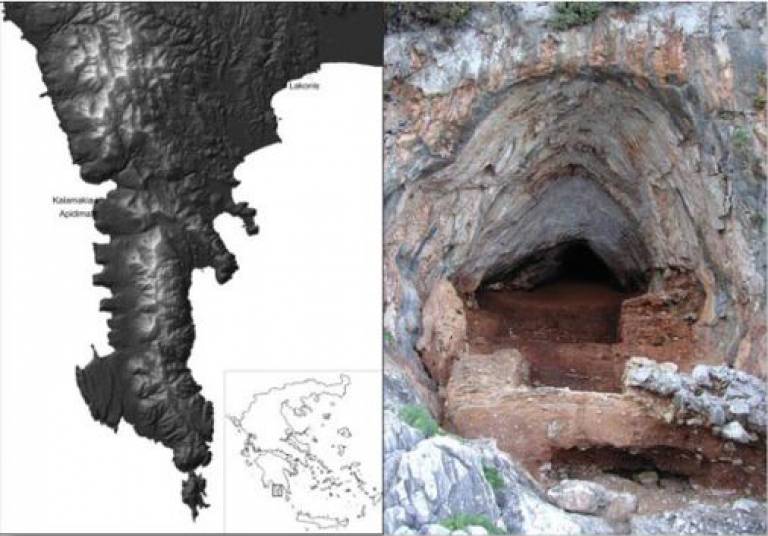Reanalysis of Late Pleistocene teeth from Kalamakia, Greece sheds light on Homo neanderthalensis & Homo sapiens evolution
5 April 2018
This study investigates two Neanderthal lower fourth premolars from Kalamakia, Greece, in order to better explore and document the morphology of the Kalamakia assemblage.
 The material consisted of micro-CT scans of the Kalamakia premolars (KAL6 and KAL9), and a comparative sample of 51 specimens, including 10 Neanderthals, one early Homo sapiens, and 40 recent Homo sapiens. The premolars were analyzed applying geometric morphometric methods on crown outlines as well as collecting measurements on internal dental structures. Data were subjected to principal components and other standard statistical analyses. A between-group principal components analysis of the outline shape coordinates separated our Neanderthal sample from the modern human one with little overlap. KAL9 showed the most extreme Neanderthal shape while KAL6 fell within the NEA shape range. Additional measurements of internal structures, especially the lateral dentine and pulp chamber volume, strengthened these results.
The material consisted of micro-CT scans of the Kalamakia premolars (KAL6 and KAL9), and a comparative sample of 51 specimens, including 10 Neanderthals, one early Homo sapiens, and 40 recent Homo sapiens. The premolars were analyzed applying geometric morphometric methods on crown outlines as well as collecting measurements on internal dental structures. Data were subjected to principal components and other standard statistical analyses. A between-group principal components analysis of the outline shape coordinates separated our Neanderthal sample from the modern human one with little overlap. KAL9 showed the most extreme Neanderthal shape while KAL6 fell within the NEA shape range. Additional measurements of internal structures, especially the lateral dentine and pulp chamber volume, strengthened these results.
Geometric morphometric analysis and internal structure measurements of the Neanderthal lower fourth premolars from Kalamakia, Greece
Catherine C. Bauer, Stefano Benazzi, Andreas Darlas, Katerina Harvati
DOI: 10.1016/j.quaint.2018.01.035
 Close
Close

